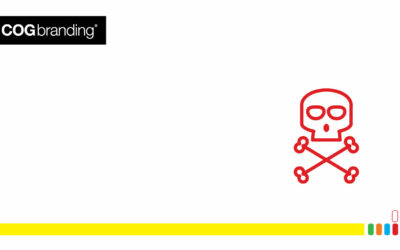Outbound Marketing For Your Small Business And How You Can Achieve Success With Limited Budget.
Outbound Marketing
Interruption marketing is also known as outbound marketing, and it can be simply defined as promoting a product through continuous advertising, promotions, public relations and sales. Sometimes it is considered to be an annoying version of the standard way of doing marketing (eg: a brand or organisation finding customers through advertising). Outbound marketing is often called interruption marketing, and for a very good reason – this style of marketing takes your message out to customers and tries to grab their attention wherever they are. Outbound marketing is an age-old technique, but technology has opened new channels for outbound marketing that can deliver immediate, measurable results and assist you targeting your consumers with precision.
Offline Advertising
With modern online advertising platforms, offline advertising can seem a bit old school. Though as online advertising channels become more and more popular, offline advertising is in some situations becoming less expensive and at times more cost effective. Offline advertising can still be a fantastic way to push your brand in front of a bigger audience. Some of the offline marketing channels you might consider include the below. While these channels can make it hard to target a specific audience, with a bit of research you can at least narrow your audience down. For television, radio or print advertising, make sure you get audience demographics.
- TV advertising
- Radio advertising
- Outdoor display advertising
- Print advertising
- Direct mail
- Branded promotional items (swag)
- Trade show exhibitor space
Pay-per-click
Pay-per-click marketing is, as it sounds, online advertising that charges you per clickthrough. The way the amount you pay per click is determined will depend on the platform, but most come down to a strategy of bidding for keywords. Providers of strategic Lead Generation solutions via PPC Campaigns on platforms such as Google Ads, Meta (Facebook & Instagram), LinkedIn, Twitter and Outbrain will need a digital marketing agency to create ad copy, design content, deploy campaigns and analyse data.
Search Engine Marketing
Search engine marketing (SEM) is paid marketing through ads that appear at the top of search results pages. As people spend more time online, and use Google as their primary starting location, search engine traffic will continually account for the majority of inbound traffic to websites. SEM campaigns focus on pursuing keyword targeted traffic to a website, and building traffic should ideally meet the strategy and business objective, plus converting. These are conversions such as an online purchase, an online booking, a referral to friends, subscribe to a database or even a phone call are key to success.
Social Media Paid Marketing
Social media paid marketing works on many of the same principles as other pay-per-click marketing. The strength of social media marketing is the ability to target very specific audience demographics with your ads. As with organic social media marketing, paid social media marketing comes down to knowing what platforms your audience is most likely to engage with, and the kind of content that gets the most engagement on each platform. Each social media platform offers different ad formats, but for most of them the basics of a good ad remain the same: use attention-grabbing imagery, use video whenever possible, show people using your product or service, create a killer headline, lead with benefits and provide a clear call to action.

Display Advertising
Display advertising is closer to traditional advertising than a channel like Google Ads. You’ve certainly seen display ads before, lurking down the margins of webpages, at the top below the site’s header image or running along the bottom. The downside of display advertising, of course, is that it can seem obtrusive and annoying. It also has a much lower clickthrough and conversion rate than Google Ads.
Email Campaigns
Email marketing is an incredibly effective tool. It drives better acquisition and retention than just about any other marketing activity. It also delivers an incredible ROI. A 2015 report by the Direct Marketing Association found that for every $1 spent on email marketing, companies generated an average return of $38.
Building an Email List: One of the benefits of email marketing compared to other forms of outbound marketing is that, assuming you’re complying with anti-spam regulations, your emails are marketing to an audience that’s already asked to receive your marketing materials. If you’re a startup, that means you’ll be building your email list from scratch. And that means you need to offer people something of value in exchange for their email address. Consider offering downloadable guides and resources relating to your industry in exchange for email signups.
Writing an email that gets clicks: Whether or not you segment your list, your email marketing success hinges on creating an email that people want to open and click on. The first hurdle after your email lands in a customer’s inbox is getting them to open it in the first place. This means crafting an enticing subject line that piques their curiosity.
Landing Pages
Much of your marketing will rely on the strength of your landing pages . A landing page is the page users are directed to when they click through from an ad or email. The more you customize landing pages to your specific marketing channels, the better they’ll perform. A good landing page starts with a good headline. Your headline is the place to put forward your unique service proposition. What sets your company apart? How will interacting with your brand make your customers’ lives better or easier?
Measuring the ROI of outbound marketing
Measuring the ROI of outbound marketing tends to be much easier than measuring the ROI of inbound marketing. For digital channels, you’ll be able to see how many people clicked on your ads, and which of those ended in conversions.
If the focus of your marketing campaign is conversions, you’ll be able to set up your Google Analytics and your Google Ads dashboard to track conversions through SEM, social media marketing and display advertising. You can also use Google Analytics to track your email campaigns (this is a cinch if your campaigns lead to dedicated landing pages).
Pros of outbound marketing are that it’s easy to measure ROI and you get Immediate results. While the Cons of outbound marketing is that it’s expensive and Ads have a limited lifespan
COG Branding can help your Australian SMB small business with a tailored Outbound Marketing plan that connect brand to business and allows the full ecosystem of brand marketing to work together, outbound marketing included. Successful marketing requires both reaching out to customers and enticing them to come to you. It also requires you to engage with multiple channels. Once customers begin coming to your door, you’ll be in the fortunate position of needing to scale your business. But the way you scale your business requires some strategic thinking.



